Camera set up to catch Loch Ness Monster discovered
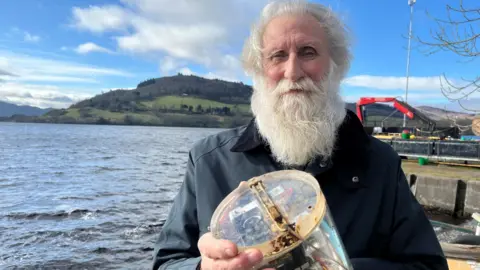 BBC
BBCAn underwater camera set up 55 years ago to try and photograph the Loch Ness Monster has been found by accident by a robot submarine.
The ocean-going yellow sub - called Boaty McBoatface - was being put through trials when its propeller snagged the mooring for the 1970s camera system.
It is believed it was lowered 180m (591ft) below the loch's surface by the Loch Ness Investigation Bureau, a group set up in the 1960s to uncover the existence of Nessie in the waters.
No footage of Nessie has been found on the camera, but one of the submarine's engineers was able to develop a few images of the loch's murky waters.
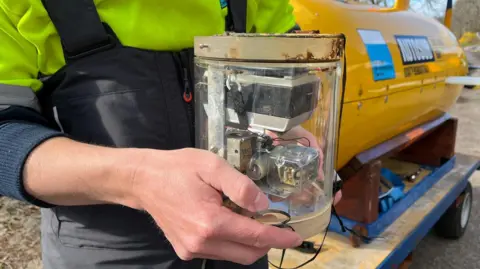 NOC
NOC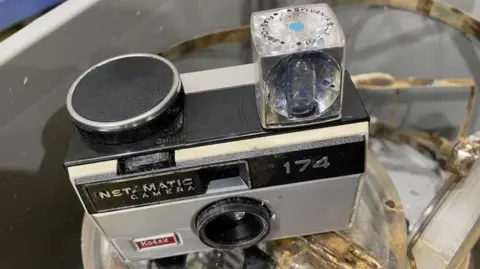 NOC
NOC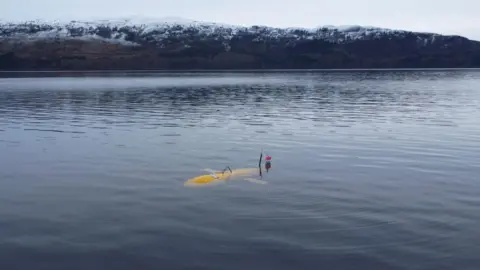 NOC
NOCAdrian Shine, of The Loch Ness Project - which has been researching the loch since the 1970s, helped to identify the camera.
He said it was likely to be one of six deployed. Three were lost in the loch during a gale.
Mr Shine said: "It was an ingenious camera trap consisting of a clockwork Instamatic camera with an inbuilt flash cube, enabling four pictures to be taken when a bait line was taken.
"It is remarkable that the housing has kept the camera dry for the past 55 years, lying more than 130m (426ft) deep in Loch Ness."
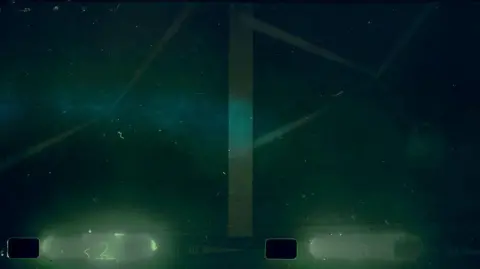 NOC
NOC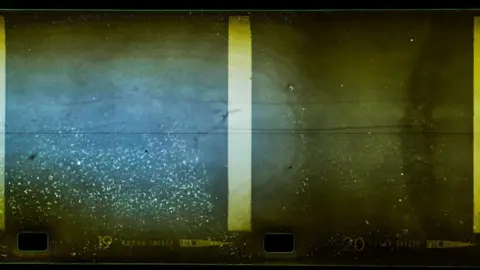 NOC
NOCThe UK's National Oceanography Centre (NOC) has been carrying out trials of marine autonomous underwater vehicles for almost 10 years.
NOC's Matt Kingsland said: "At 230m (754ft) deep, Loch Ness is an ideal location to testing our robotics, their sensors and systems, before they're deployed in the deep ocean to help answer the big questions we have.
"While this wasn't a find we expected to make, but we're happy that this piece of Nessie hunting history can be shared and perhaps at least the mystery of who left it in the loch can be solved."
The film, camera and its housing have been handed to The Loch Ness Centre, in Drumnadrochit, near to where it was found.
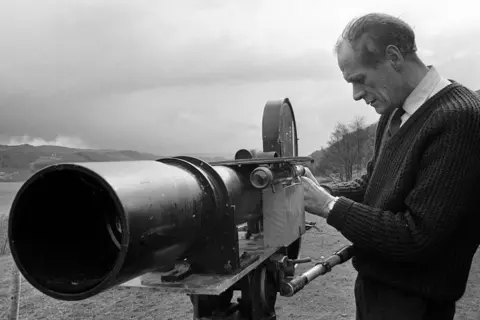 Getty Images
Getty ImagesRobot Boaty McBoatface got its name following an online initiative in 2016 in which the public was asked to suggest a name for a new polar ship.
Boaty McBoatface was the suggestion that gained most support.
UK government ministers rejected this as inappropriate, and ordered that ship be called RRS Sir David Attenborough. It was decided, however, that one of its robot submarines could be named Boaty McBoatface.
